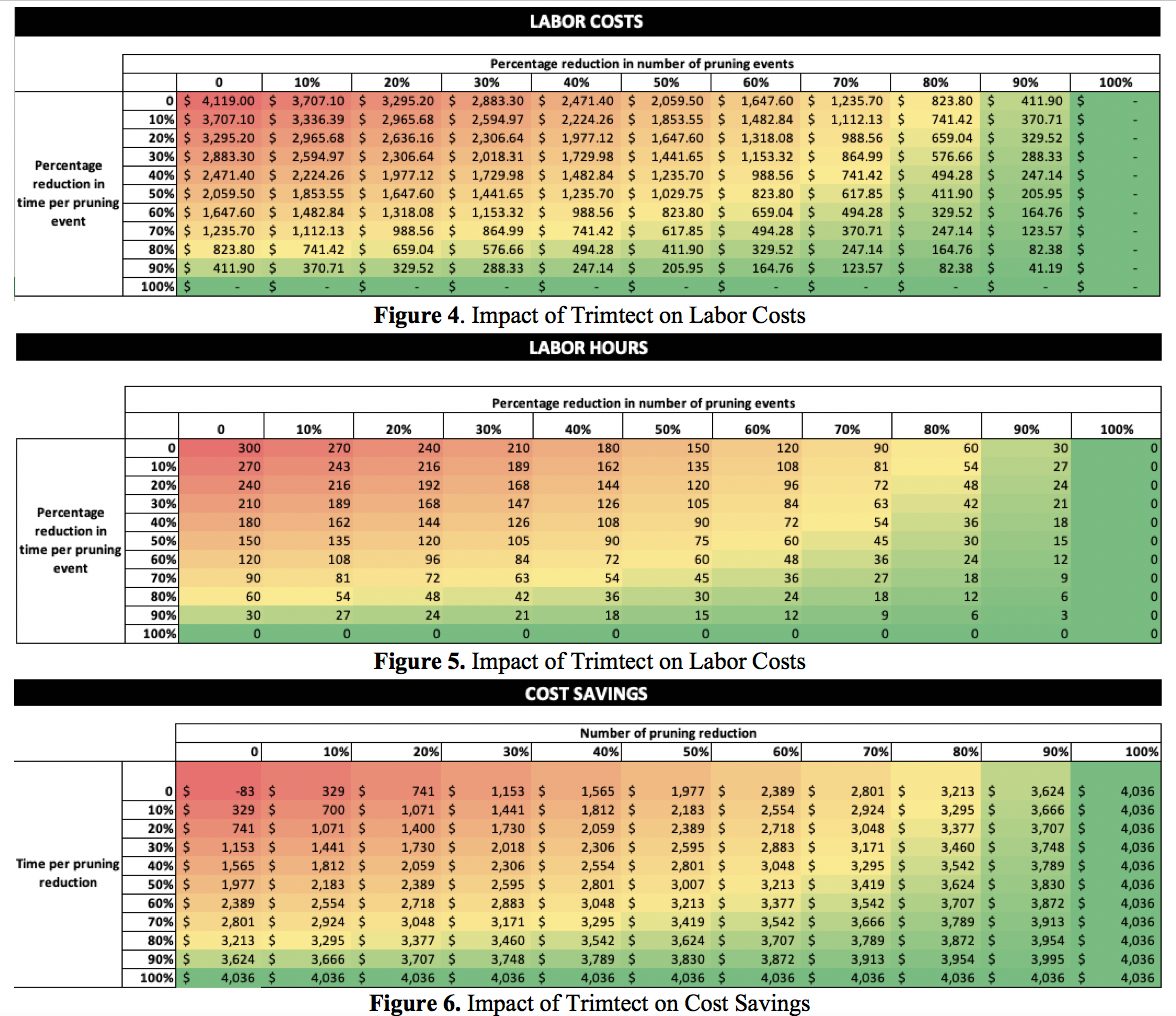Plant Growth Regulators (PGRs) have been proposed as a management tool for reducing the labor needs in the Green Industry. Although PGRs are widely accepted in the ornamental plant production, their adoption among landscape maintenance companies is limited. The cost of PGRs and the lack of economic feasibility analyses are likely to undermine their adoption.
To address the lack of economic studies the Purdue Horticulture Business Extension program has developed a financial calculator, PGRcalculator. The calculator displays the economic impact of using PGRs (Paclobutrazol; Trimtect; Rainbow Treecare Scientific Advancements; Minnetonka, MN) for shrub maintenance, subject to product efficacy, wages, and application rate.
This and other articles of the series Economics of Using Plant Growth Regulators in the Landscape can be downloaded at www.hort.purdue.edu/hortbusiness.
The tool consists of three sections:
- The Site Information (Section 1) guides users through a series of questions to input key variables associated with calculating the impact of Trimtect. Key variables include total area of PGR treatment, number of hours for each pruning event, number of pruning events per year, hourly wage paid to pruning workers, shrub species, PGR application rate, and number of PGR applications per year.

Figure 1. Input information variables
- Calculations (Section 2) provides the calculations obtained from inputting data into Section 1. The tool provides the following calculations: annual number of expected pruning events, annual number of expected pruning hours, coverage of Ready-To-Use (RTU) solution, and annual Trimtect volume. Cells in yellow indicate that the spreadsheet generates information automatically.
 Figure 2. Calculations based on user’s information
Figure 2. Calculations based on user’s information
- Economic Analyses (Section 3) provides the analyses including cost breakdown (Figure 3), labor cost (Figure 4), labor hours (Figure 5), and cost savings (Figure 6). The cost breakdown analysis illustrates the two main costs in the tool: labor cost without PGRs and cost of agrochemicals (Trimtect and surfactant).

Figure 3. Costs Breakdown
The Labor Costs analysis is illustrated in Figure 4. This analysis uses a sensitivity approach to display how labor costs can change as the efficacy of Trimtect changes. We defined PGR efficacy by the percentage reduction of both pruning events and time per pruning event. In other words, labor costs reduce as the efficacy of Trimtect increases (see other articles in this series for more information).
Figure 4 illustrates that a 0% efficacy results in annual labor costs of $4,119, which were the costs incurred without Trimtect. On the other hand, a 50% reduction of both the number of pruning events and the time per pruning event decrease labor costs to $1,029.75. Furthermore, when the efficacy of Trimtect results in 90% reduction of both the number of pruning events and the time per pruning event, labor costs are projected to decrease to just $41.19.
The impact of Trimtect efficacy on labor hours is illustrated in Figure 5. Similar to Figure 4, labor hours can be impacted by the reduction of pruning events and time per pruning event.
Lastly, Figure 6 illustrates how Trimtect can impact cost savings. Figure 6 displays the dollar savings per year as the efficacy of Trimtect increases. Cost savings were calculated based on the reduction of labor costs and additional costs of agrochemicals (Trimtect and surfactant), and does not include other maintenance costs (e.g., fertilization, pesticide applications, etc.).
Analyses show that PGRs can effectively reduce labor costs due to a reduction of pruning events and time per pruning. Our findings also show that depending on Trimtect efficacy, businesses can reduce the number of labor hours, which can directly impact labor reallocation to other tasks that offer higher return.
Potential benefits of PGRs may go further than time and cost savings. Benefits may also include savings on waste disposal and increased labor safety. Given the fact that PGRs reduce shrubs’ biomass production, savings in waste disposal can potentially increase the economic benefit of PGRs. By reducing plant growth, PGRs can diminish the amount of workers’ exposure to pruning tools and equipment use. Reports show that landscape services is an industry with considerable rates of injury and illness, as well as fatalities. The National Institute for Occupational Safety and Health reported 45% of fatalities among landscape services workers are due to the use and operation of tools and machinery. Similarly, 51% of fatalities in the landscape industry were incurred by groundskeepers working in ornamental shrub and tree maintenance.
Distribution of the HortCalculator
The calculator will be hosted at https://www.purdue.edu/hla/sites/hortbusiness/
